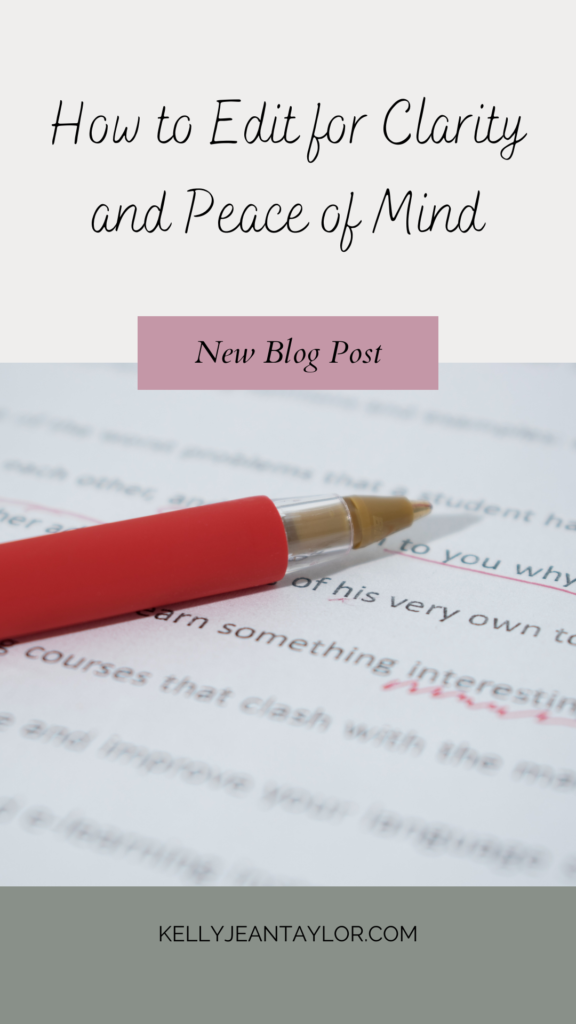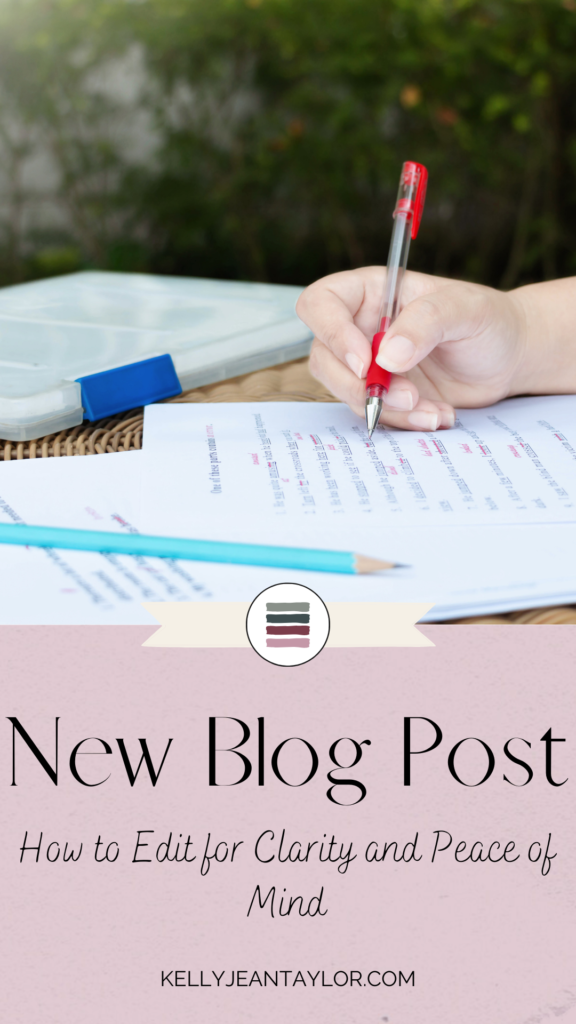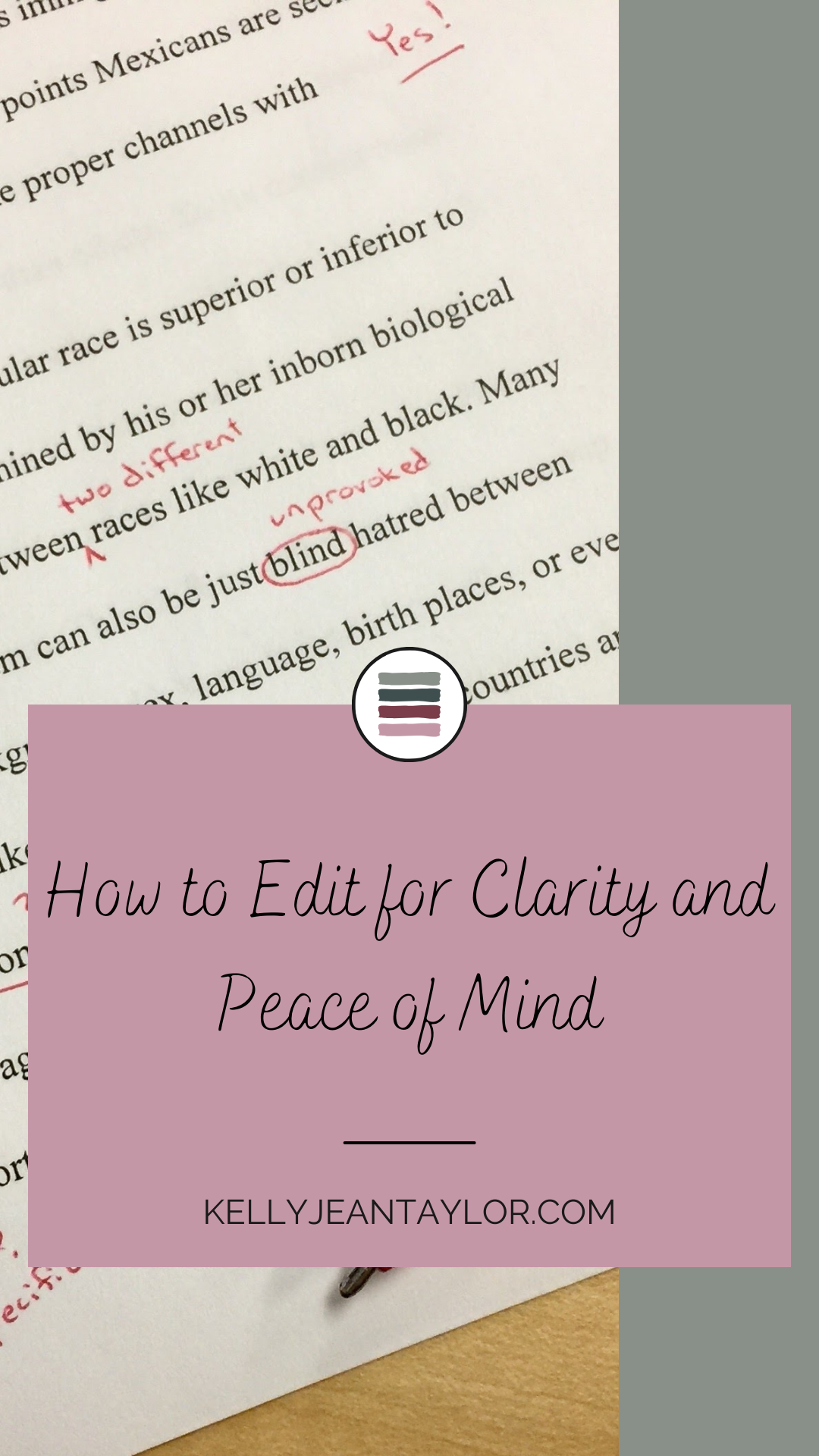
How to Edit for Clarity and Peace of Mind
Once your revising is complete, you can now edit and get into the little details of that process. Another daunting task, but again if you take your time and work through it one at a time, you’ll get through your edits with little frustration.
What is Editing?
You’ve done revising, which looked at the big picture items of your manuscript. Editing is looking at all the little details of your writing. You can even add proofreading to this if you’d like. This activity gets your manuscript polished for others to look at, like your editor or even ARC readers.
What Does Editing Involve?
There is quite a bit to look for when editing your novel, from punctuation to word usage, grammar, and even further formatting. These little things are going to make your manuscript the best it can be before sending it off to any others who’ll read it.
Before You Start
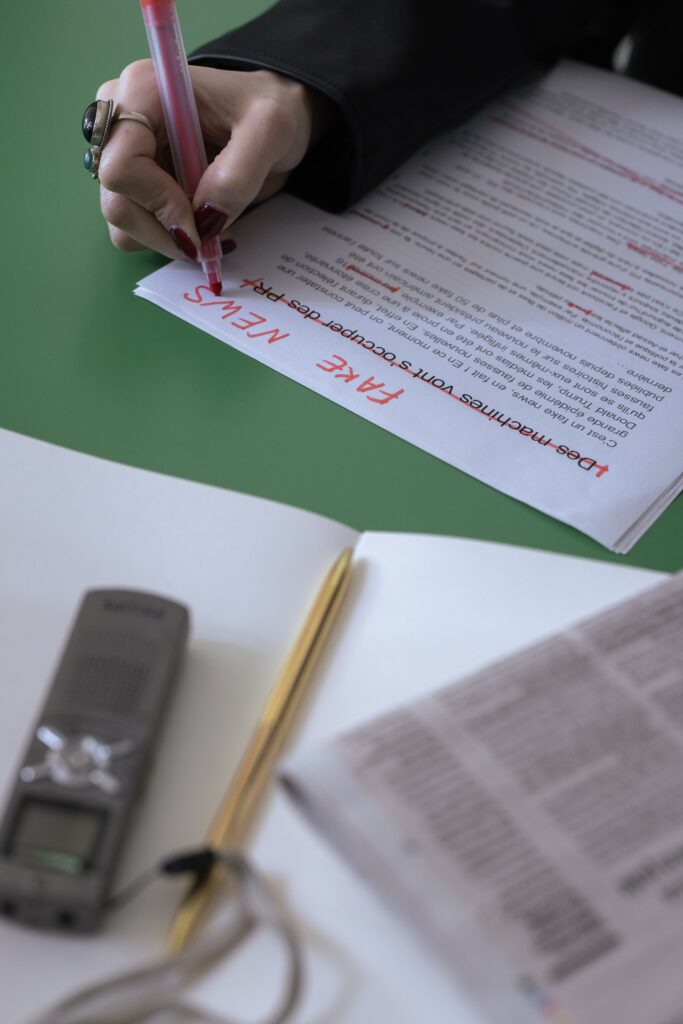
As with any other process, there are some things you’ll want to do to get ready to edit your manuscript. There are some things that will ease the process, but you’ll still want to prepare for the extended time you’ll be working on this.
Separate the writing process from the editing process. As with revising, you don’t want to edit while you’re working on another part of the writing process. Each part is equally important and should be done separately.
Grab whatever notes you have written for this project to refer to while editing. You may have written some down while revising that you need to look into or have some information you may need to look back at. So have that handy, you don’t want to realize you need it and have to go find it.
Give the manuscript rest between each process step. After writing and then revising, I’m sure you’ll want a rest from your manuscript. Not that you don’t love it. You could just use a look at something that isn’t that story for a bit. Take some time to rest your mind and body before jumping into edits.
Create an atmosphere where you’ll be able to complete your edits in a calm and comfortable place. Whether that’s in your backyard, living room with light music, or at a coffee shop. Wherever you are most comfortable and can limit distractions.
If you plan to print your manuscript for edits, it may be easier on the eyes to change the format of your manuscript for these edits. Of course, you’ll have to revert back before sending it to beta/Arc readers or editors. Changing the format for this can help the process go smoother. Suggestions are to double-space, Courier New font, and 12-point size.
Keep a copy of Elements of Style close by in the event there is a need to look something up or clarify something.
What to Look For When Editing
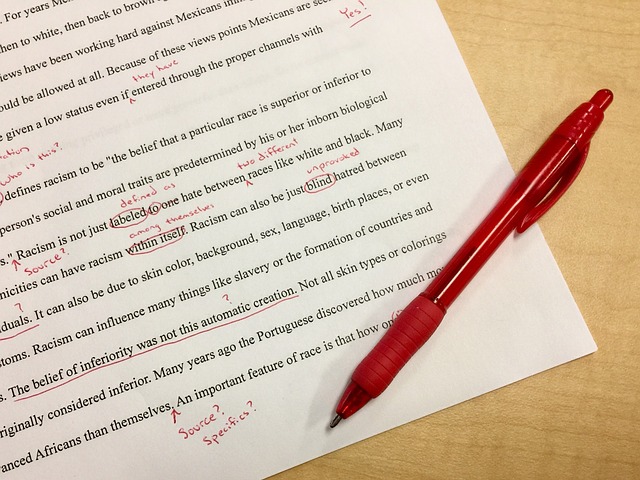
These items are what you’re looking to correct before passing your book to new readers. Your goal is to get it to the highest level you can. Read through your manuscript aloud, yet again, and just in case you spot anything you missed, keep a notebook handy. Comb through your manuscript making notes or marking it up to record edits.
Line Edit
Line editing is where we concentrate on the story’s creative elements to find errors in writing style and language use in each sentence.
Note that spelling, punctuation, and grammar are listed within all three, this is because you are always looking for these errors, and going through them multiple times will help catch most if not all of these errors. During this edit, we’ll look at these main points:
- Check for spelling mistakes and grammatical errors. You may use spell check, just know it won’t catch some errors like “a” instead of “as”, you’ll need to go through to find these.
- Review ALL punctuation.
- Commas are crucial to correct sentence structure. Avoid comma splices where a colon, semi-colon, or conjunction should be.
- Remove and replace “to be” words. These are passive voice, choose a consistent verb tense – try sticking with one tense. (“to be” words: am, is, are, was, were, be, being, been)
- Replace overused words. You may realize that you favored a word or phrase throughout the story. (Unless it is a character phrase) Find other words or phrases to spruce it up.
- Metaphors, make sure they make sense, or keep them out of your story. If your audience won’t understand, it’s not worth putting it in.
- Knock out cliches, you don’t want to seem predictable, your audience may stop reading.
- Eliminate redundancies. When you say someone blinked their eyes, you only need to say they blinked. I mean, what else are they going to blink other than their eyes, right?
- Remove your modifiers. Modifiers add fluff and lead to chunky sentence structure.
- Check for apostrophes, run-on sentences, fragments, missing quotes, etc.
- Use appropriate attributing tags. Use “said.” There is no need to add more.
- Don’t tell the reader what is not happening. That’s like saying someone didn’t speak or run across the yard. Just say they stayed quiet, or don’t mention it. Most times it is not necessary.
- Check for clarity. Do you always know who is talking and when?
- Avoid complicated word choices. Complicated language, though it might sound good at the time, can distract your readers and disrupt the flow.
Copy Edit
Here we’ll edit on a more technical level. You should focus on these points:
- Check for spelling mistakes and grammatical errors. You may use spell check, just know it won’t catch some errors like “a” instead of “as”, you’ll need to go through to find these.
- Review ALL punctuation.
- Make sure your formatting is consistent all the way through. Typestyles, sizes and more.
- Look for any inconsistencies within your writing. Character features and habits.
- Simplify clunky language. if you stumble over a sentence while reading, you probably have clunky word choice.
- Keep your voice consistent and crisp throughout.
- Revise unnecessary and remove weak words. -ly words and added fluff are unnecessary. Opt for precise nouns or verbs (Weak adjectives like “really” and “very”, eliminate “up” and “down”)
- Look for words that sound the same but are spelled differently and be sure you’re using the correct form.
Proofreading
Here is where you search for any errors that may have been missed. Below are the most common errors to look for:
- Check for spelling mistakes and grammatical errors. You may use spell check, just know it won’t catch some errors like “a” instead of “as”, you’ll need to go through to find these.
- Review ALL punctuation.
- Check for misformatted dialogue.
- Use suitable formatting.
- Avoid capital letters – Only use them when capitalizing the beginning of a sentence or for proper nouns.
- On-page layouts. These include headers, sub-headers, page numbers, breaks, etc.
Note: You never want to be accused of plagiarism, so use a plagiarism checker so you are not inadvertently plagiarizing someone.
Final Thoughts
Editing can be a daunting task and not one you want to do right after finally getting all those wonderful words written with your finished draft. You may need to read through your work multiple times to complete all edits, but it will be worth it in the end.
Are you in the process of editing? Where are you at in your editing process? What have you learned that you’d like to pass onto others? Comment below!
